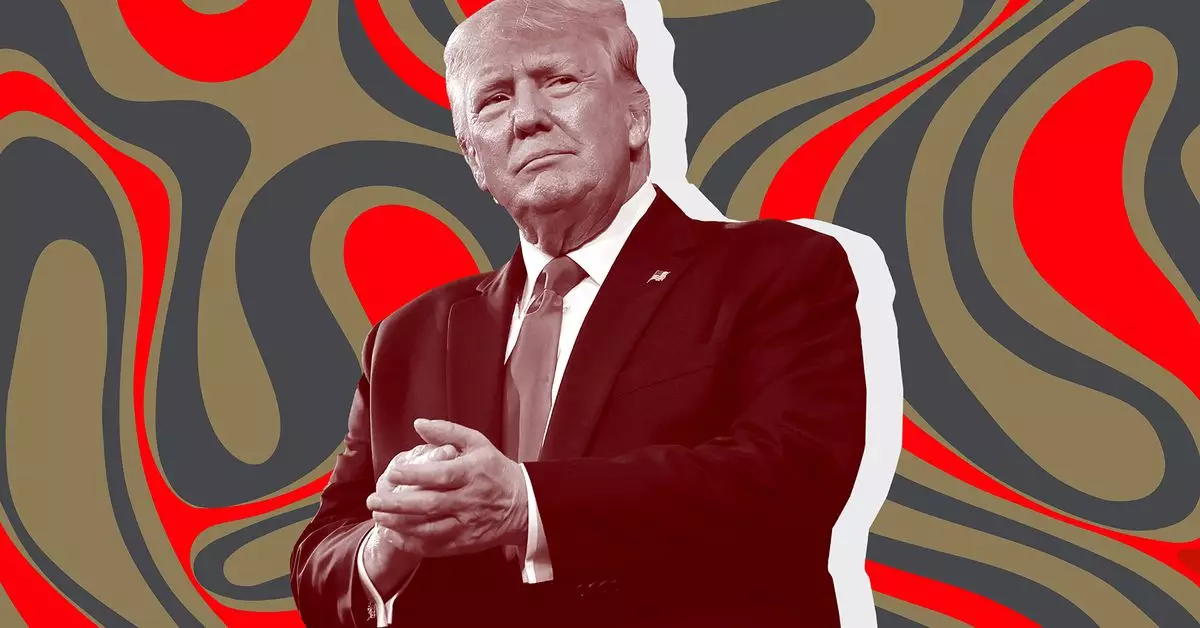The cryptocurrency landscape is ever-evolving, with various projects vying for attention and investment. The latest contender is World Liberty Financial (WLF), touted as the brainchild of former President Donald Trump. The project promises a decentralized finance (DeFi) platform aimed at promoting financial inclusion for the unbanked and those disenfranchised by traditional banking systems. However, despite the initial excitement and overwhelming interest, the launch of WLF raised numerous questions and concerns that warrant a deeper look.
The enthusiasm surrounding the launch was palpable, with World Liberty Financial’s token sale going live on a Tuesday. Almost immediately, the platform’s website crashed—a scenario often associated with heavy traffic but indicative of poor preparation. There are claims that over 100,000 interested investors signed up ahead of the sale, but as blockchain analytics revealed, only a fraction—5,317 unique wallet addresses—actually ended up purchasing the token. This disparity raises questions about the project’s initial claims and the mechanisms put in place to manage demand.
Zach Folkman, one of the co-founders of WLF, had promoted the project vigorously, but did they genuinely prepare for the anticipated high interest? Sandy Peng, an advisor to WLF, cited “excessive traffic” as the cause of the outages. While the rapid influx of 72 million unique visits within the first hour indicates eager participation, it also reflects a lack of foresight by the development team. Their inability to manage expectations and server capacity may act as a warning for potential investors considering the credibility of the platform.
The WLFI token, which is set to serve as the governance token for the World Liberty Financial platform, has generated curiosity regarding its operational mechanics. Users holding WLFI tokens will ostensibly have a say in matters like protocol upgrades and security oversight. However, an important stipulation complicates the narrative of financial inclusivity: the project primarily targets accredited investors, effectively excluding a broad section of the population that the project purports to assist.
To qualify as an accredited investor, individuals must meet specific financial criteria, including a minimum income or net worth. This clause is a significant gatekeeping mechanism, countering the project’s stated goal of enabling financial access for all. It raises ethical concerns about the genuine intentions of WLF: Is it really about giving a voice to the underbanked, or merely about catering to affluent investors with greater resources?
World Liberty Financial is designed to function within the decentralized finance milieu, offering borrowing and lending functionalities in the cryptocurrency space. However, the question remains: will this platform genuinely benefit those it aims to serve? The project has positioned itself as a revolutionary tool, yet its mechanisms prioritize a select group and require deeper introspection.
Moreover, the announcement of a “gold paper,” which lists Donald Trump as the “chief crypto associate,” also invites skepticism. The inclusion of Trump’s sons as Web3 Ambassadors appears to leverage their familial association as a marketing strategy rather than demonstrating substantial expertise. Such branding tactics can overshadow the need for transparency and legitimacy in a highly volatile digital currency market.
The launch of World Liberty Financial illuminates both the potential and the pitfalls associated with new cryptocurrency initiatives. While the interest in WLFI showcases the enthusiasm surrounding DeFi, the project’s execution allows room for skepticism. Dealing with technical issues, catering predominantly to accredited investors, and relying heavily on familial branding may undermine the foundational aspirations of the platform.
As World Liberty Financial moves forward, its capacity to pivot—a necessity in the fast-paced crypto world—will be key to determining its success or failure. The dream of a decentralized financial ecosystem could either manifest or collapse under the weight of its inconsistencies. For investors and users alike, vigilance will be paramount as this ambitious project continues to unfold.

